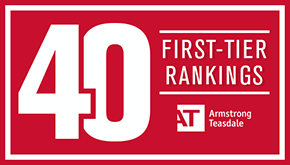OSHA Issues COVID-19 Guidance on Cloth Face Coverings, Surgical Masks and Respirators
Since the beginning of the pandemic, employers have struggled to understand OSHA’s position on cloth face coverings and surgical masks, whether OSHA requires or recommends their use, and whether these items constitute personal protective equipment (PPE). While this may seem trivial, employers want to know what their compliance obligations are. If these items constitute necessary PPE, under 29 CFR 1910.132, certain compliance obligations are triggered concerning the employer’s responsibility for training, use and care of the equipment. On June 10, 2020, OSHA issued COVID-19 Frequently Asked Questions (FAQs) and responses concerning cloth face covering, surgical masks and respirators. Some, but not all, questions are answered.
FAQ 1 discusses the key differences between cloth face coverings, surgical masks and respirators.
Cloth face coverings. Cloth face coverings, which may be homemade or commercially produced, are not considered PPE by OSHA. They do not protect employees from airborne infectious agents due to loose fit and lack of seal or inadequate filtration. Therefore, employers who require employees to wear them are not required to comply with 29 CFR 1910.132. Cloth face coverings are not an adequate substitute for surgical masks or respirators when the employer recommends or requires that surgical masks or respirators be worn. They may be disposable or reusable with proper washing.
FAQ 2 asks whether employers are required to provide cloth face coverings to employees, and the answer is no. However, the answer also states that employers may choose to require cloth face coverings as part of a control plan designed to reduce hazards.
The response to FAQ 3 states that OSHA recommends that employers encourage employees to wear cloth face coverings at work as a means of source control, in other words, preventing an infected person from inadvertently spreading the virus. The response further states that employers have the discretion to determine whether to allow employees to wear cloth face coverings, and that wearing them may sometimes create a hazard, such as, for example, if an employee wears a face covering that contains the virus or has some workplace chemical on it.
The response to FAQ 4 states that even if employees wear cloth face coverings, employers should still enforce social distancing requirements.
Surgical masks. The response to FAQ 1 seems to give employers some control in determining the purpose for which the employer requires surgical masks to be worn. It states initially that surgical masks “are” used to protect workers against splashes and sprays (i.e., droplets) containing potentially infectious materials. CDC guidance states that one way of transmitting the virus is from respiratory droplets produced when an infected person coughs, sneezes or talks. While the OSHA guidance does not reference this CDC guidance and is not clear, it is likely that these are the kinds of droplets OSHA is referring to in its guidance.
The response to FAQ 1 also states that in that capacity, surgical masks are considered PPE. In a footnote to the response to FAQ 1, however, OSHA states that if surgical masks are used only for source control and not to protect workers from splashes and sprays, they are not considered PPE. The footnote then states that the general duty clause requires employers to provide workplaces free of recognized hazards likely to result in death or serious harm, and that choosing to ensure the use of surgical masks may be considered a feasible means of source control under the general duty clause. This footnote suggests that even though the guidance states up front that surgical masks are PPE when used to protect the wearer from splashes and sprays, it is up to the employer to determine the purpose of surgical mask use. If they are used to protect the wearer, they are PPE. However, if the employer determines that they are used only to protect others from being infected by the wearer, they are not PPE, but rather, an administrative source control.
The guidance states that surgical masks will not protect the wearer against airborne transmissible infectious agents due to loose fit and lack of seal or inadequate filtration.
Filtering Face-piece Respirators. The guidance states that respirators are used to protect workers from inhaling small particles, including airborne transmissible or aerosolized infectious agents. When respirators are necessary to protect the worker, the employer must comply with 29 CFR 1910.134, the respiratory protection standard. When filtering face-piece respirators are provided by the employer but use is voluntary, employees must be provided with the information found in Appendix D of the respiratory protection standard, but there are no other compliance obligations, such as a medical evaluation. This is not a new requirement and has been a part of the standard for many years.
Armstrong Teasdale attorneys are actively monitoring and providing updates regarding the impact of COVID-19. For additional information, visit Armstrong Teasdale’s COVID-19 Resource Center.









































